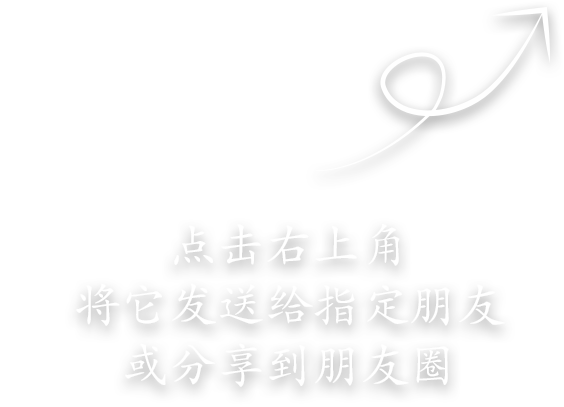1. Wet Lab
1.1 Plasmid and strain
We used E.coli BL21(DE3)(provided by our instructor's lab) as recipient and pET32a vector which contains an ampicillin resistance gene as the selection marker.
1.2 Extraction of pET32a-AlyAYO plasmid and double enzyme digestion
Inoculate 50 µL of glycerol bacteria(provided by our instructor's lab) into 5 mL of LB liquid medium(HB0128, hopebio) containing a one-thousandth concentration of ampicillin(Sangon biotech) and incubate overnight at 37℃ and 180rpm on a constant temperature shaker(MQL-61R, Shanghai Minquan Instrument Co., Ltd). The plasmid was extracted with a plasmid extraction kit (E.Z.N.A. Plasmid DNA Mini Kit Ⅰ, V spin, Omega Bio-Tek). The concentration and quality of the extracted plasmids were detected by Nano Drop (Thermo Scientific Nanodrop One).
Then we produced double enzyme digestion to collect pET32a linearized plasmid and AlyAYO gene. The reaction system was set as Table 1.
Table 1 Composition of Plasmid Extraction Reaction Mixture
Reagent Name | Dosage(μL) |
plasmid | 45 |
BamHⅠ | 1.5 |
XhoⅠ | 1.5 |
10× K Buffer | 5.3 |
The reaction was performed at 30℃ for at least 6h. The product was examined by 1% agarose (1110GR100, Biofroxx ) gel electrophoresis and then recovered with gel extraction kit (E.Z.N.A. Gel Extraction Kit V spin, Omega Bio-Tek).
1.3 Error-prone PCR
The PCR primers were designed with the intention of introducing errors, using the following parameters: primer F of GGATCCATGGCGCAGCTGGACCCGA and an annealing temperature of 70.9℃; primer R of CTCGAGTTAGTGTTTGATATCCAGCTGGTAGAAGCTAACCTGG and annealing temperature of 65.9℃. The error-prone PCR was carried out using Error-prone PCR kit (Controlled Error-prone PCR Kit (ZY-160903), Zebra Bio), the template was the extracted plasmid, and the two mutation numbers of 5,8 were selected and 35 cycles were carried out for 4 times.
The reaction systems with AlyAYO template concentrations of 1ng/μL and 10ng/μL were set as Table 2.
Table 2 Composition of Error-prone PCR Reaction Mixture
expected number of mutations per 1000bp | 5 | 8 |
5× Mix | 6μl | 6μl |
MnCl2 | 4μl | 4μl |
dGTP | 1μl | 4μl |
template | 1μl | 1μl |
pF | 1μl | 1μl |
pR | 1μl | 1μl |
DNA polymerase | 0.5μl | 0.5μl |
ddH2O | 15.5μl | 12.5μl |
After pre-denaturation at 94℃ for 3min, 35 cycles of reaction were performed: denaturation at 94℃for 1 min, annealing at 60.9℃ for 1 min and extension at 72℃ for 3min(A300 Fast Thermal Cycler,LongGene). The PCR products were examined by electrophoresis on 1% agarose gel.
1.4 Double digestion and agarose gel electrophoresis for product recovery
Cycle-pure Kit (E.Z.N.A. Cycle-pure Kit(D6492-02), Omega Bio-Tek) was then used to recover the mutated AlyAYO gene from the product of error-prone PCR. Then the mutated genes were subjected to digestion with two enzymes(BamHⅠ(1010S) and XhoⅠ(1094S), Takara) and K Buffer(Takara, comes with BamHⅠ enzyme). Add 1.5μl of each enzyme, and the amount of K Buffer added is one tenth of the total system. Agarose gel electrophoresis was then performed to recover the mutated AlyAYO gene using an agarose gel recovery kit (E.Z.N.A. Gel Extraction Kit V spin, Omega Bio-Tek). The digested products were incubated at 30°C for at least 6 hours. The concentration and quality of the recovered products were subsequently determined using a Nano Drop spectrophotometer (Thermo Scientific NanoDrop one).
1.5 Connections and conversions
The mutant gene and pET32a plasmid which had been digested into a linear form by two enzyme should be connected together.
The connecting reaction system was set as Table 3.
Table 3 Composition of Connecting Reaction Mixture
Reagent Name | Dosage(μL) |
gene | 7 |
vector | 1 |
T4 DNA Ligase (2011A, Takara) | 1 |
T4 DNA Ligase Buffer (Takara, comes with T4 DNA Ligase) | 1 |
The ligation process should be carried out for a minimum of four hours at 16°C.
The ligation product should be added to the receptor cell, and the volume of the ligation product should not exceed 1/10 of the receptor cell. The mixture should be gently agitated, incubated on ice for 30 minutes, and then heated to 42°C for 90 seconds without agitation. Subsequently, the mixture was immediately transferred to an ice water bath for 2-3 minutes, after which 900 μL of Amp-free LB medium was added. The bacteria were then incubated in a constant temperature shaker with oscillation at 37°C and 150 rpm for 45 minutes. A 45-minute incubation period is required for the bacterium to revive and for the resistance gene to be expressed. Centrifugation at 2500 g for 5 minutes is then performed, after which the supernatant of 900μL is aspirated. The bacterium is then resuspended in the remaining medium and spread uniformly on the resistance plate with a sterile applicator stick. Once the bacterial liquid has been absorbed by the plate, it is incubated inverted at 37°C overnight. At the same time, the unmutated wild-type bacterial fluid is used to delineate the control group.
1.6 96-well plate culture and induction
A volume of 150μl of Amp-containing LB medium should be added to each well of a 96-well plate(96-well Clear Flat Bottom UV-Transparent Microplate, corning). The colonies should then be picked from the plate and transferred into the wells, where they should be incubated at 37°C 180 rpm with oscillation until the true absorbance of the bacterial solution reaches 0.6-0.8. The true absorbance is defined as follows: true absorbance = (measured absorbance – blank absorbance) x 1.3125. Because the optical path length of our enzyme-linked immunosorbent assay (ELISA) reader is different from the one used in the paper we referenced. Before induction, we take 25μL of bacterial solution from each well and transfer it to another 96-well plate. After continuing to culture for several hours, we add an equal volume of 30% glycerol(10010618, Shanghai Hushi Laboratory Equipment Co., Ltd) for seed preservation. The remaining bacterial solution should then be supplemented with the appropriate amount of IPTG(Sangon Biotech) to achieve the desired working concentration(0.2mmol/L). The culture was incubated in a constant temperature shaker set at 16°C with an agitation speed of 180 rpm for a period of 18 to 20 hours.[6,7]
1.7 Detection of enzyme activity
The bacterial precipitate should be obtained by centrifuging the 96-well plate at 4000 rpm. A volume of 150μl of bacterial lysate should be added to each well, after which the plate should be incubated at 37°C in a constant temperature incubator for one hour. Subsequently, 190μl of substrate solution should be added to the UV 96-well plate, and the contents should be suctioned. The substrate solution contains 0.2% sodium alginate(Shanghai Yuanye Bio-Technology Co., Ltd), 50mM Tris HCl(self-made by Tris and HCl, Tris was from Biofroxx, 1115GR500) solution with pH 7.5, and 200mM NaCl(10019318, Shanghai Hushi Laboratory Equipment Co., Ltd). A volume of 10μl of the diluted enzyme solution (enzyme solution: diluted buffer = 2:3, the composition of the diluted buffer is the same as the substrate solution but does not contain sodium alginate) should be added to the substrate solution with a row gun. The solution should be mixed gently to prevent the formation of bubbles and then the Bio-Tek Epoch Microplate Spectrophotometer should be used to determine the 235 nm wavelength absorbance.
2. Dry Lab
2.1 Protein obtaining, imitating, docking and analyzing
First, we obtained the 5ZU5 protein sequence from PDB[11], which was later analyzed in detail. Using BLAST(Basic Local Alignment Search Tool) on the National Center for Biotechnology Information website, protein sequences that shared no less than 90% similarities with 5ZU5 protein sequence were selected. Respectively, Consensus Finder and CB-Dock helped us with analyzing several highly conserved sites and identifying the binding sites where proteins and alginate interact. We then performed site-directed mutagenesis on those regions. We used Alphafold 3 to generate the structure of mutant proteins, performed molecular docking and analyzed the results. Since CB-Dock uses blind docking as its protein docking strategy, which led to the possibility of substrates binding to different regions, we calculated the potential substrate pocket area to ensure that substrates and enzymes bound at the correct sites. Additionally, the binding affinity of certain protein docking interactions was analyzed to determine whether it was acceptable.

